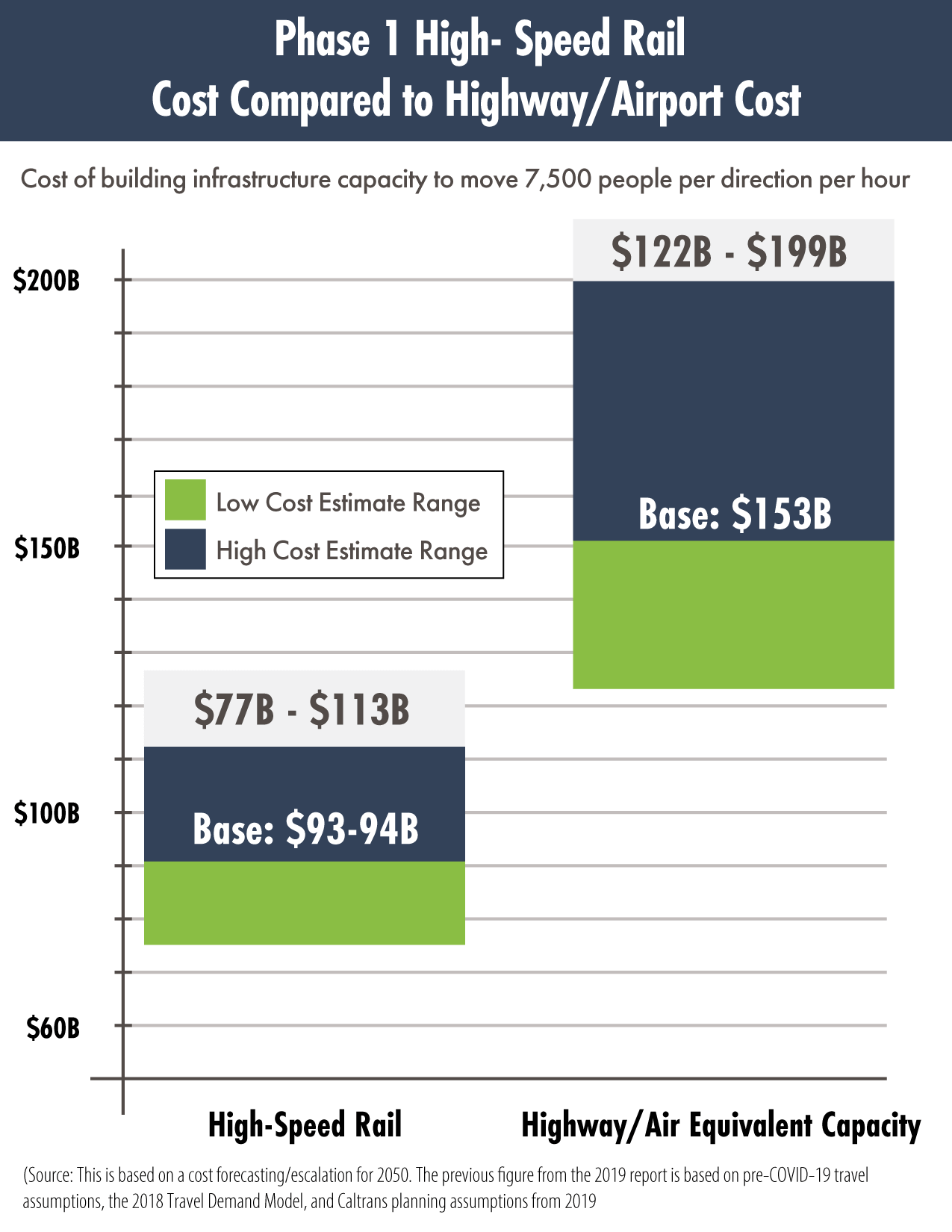High-Speed Rail at a Glance
Connecting California, Expanding the Economy and Transforming Travel
Objectives & Strategy
Our Objectives
The California High-Speed Rail Authority is working toward three fundamental objectives:
- Initiate high-speed rail passenger service as soon as possible.
- Make strategic, concurrent transportation investments that will link over time and provide mobility, economic and environmental benefits at the earliest possible time.
- Position ourselves to construct additional segments as funding becomes available.
Our Priorities
Our implementation and delivery strategy reflects the three principles that guide our decisions and reiterates our intent to focus on these priorities:
- Complete construction of the 119-mile Central Valley Segment and lay track to fulfill our federal grant agreements with the Federal Railroad Administration.
- Meet our federal commitment to environmentally clear the entire 500-mile system between San Francisco and Los Angeles/Anaheim.
- Advance construction on the “bookend” projects that we have committed funding to in the Los Angeles Basin and the Bay Area.
- Begin and complete testing of the electrified high-speed system in 2028 and put electrified high-speed trains in service by the end of the decade.
- Expand the 119-mile segment in the Central Valley to develop 171 miles of electrified high-speed rail service by advancing design, funding preconstruction work and constructing extensions to Merced and Bakersfield.
- Advance project design in each segment, including the four Southern California segments and the two Northern California segments, as each segment is environmentally cleared.
- Pursue federal and private funds prospectively to “close the gaps” and expand electrified high-speed rail service to the Bay Area and Los Angeles/Anaheim.
Facts & Figures
INVESTING IN CALIFORNIA’S FUTURE

Economic Impacts of California High-Speed Rail
(July 2006 to June 2021)

Phase 1 High-Speed Rail Cost Compared to Highway/Airport Cost text description of the bar chart
Overview
The chart compares the dollar cost (in billions) for building the infrastructure capacity to move 7,500 people per direction per hour, which requires a range of $77 to $113 billion for high-speed rail, compared to $122 to $199 billion for highways and airports.
Values
Numerical values presented on the image: Phase 1 High-Speed Rail Cost Compared to Highway/Airport Cost (in billions of dollars)
| Corridor | High-Speed Rail | Car | Passenger Rail |
|---|---|---|---|
| Bakersfield to Merced | 1.4 | 2.75 | 2.85 |
| Bakersfield to Fresno | .7 | 1.5 | 1.8 |
| Fresno to Merced | .5 | .9 | .75 |
Stimulate Economic Growth across the state – with construction jobs now and maintenance and operation jobs to come.
The Numbers:
- More than 730 Small Businesses engaged in the high-speed rail project
- More than 8,900 jobs created
- More than 460 disadvantaged workers dispatched to construction sites.
- 233 Disadvantaged Business Enterprises
- 85 Disabled Veteran Business Enterprises
- 159 Small Businesses located in disadvantaged communities
- 57% of project expenditures have taken place in disadvantaged communities
Phased High-Speed Rail System Implementation
California high-speed rail will connect the mega-regions of the state, contribute to economic development and a cleaner environment, create jobs and preserve agricultural and protected lands. The Phase 1 system will connect San Francisco to the Los Angeles basin via the Central Valley in under three hours on trains capable of exceeding more than 200 miles per hour. Phase 2 will extend to Sacramento and San Diego.
Interactive Maps
Get up to speed at BuildHSR.com
All the latest information on what's happening and where as we build California's high-speed rail


Construction Phases Text Description
Overview
The map shows the phased implementation of the California High-Speed Rail system. The 520 mile Phase 1 system involves segments between the following cities: San Francisco, San José, Gilroy, Merced, Madera, Fresno, Kings/Tulare, Bakersfield, Palmdale, Burbank, Los Angeles, and Anaheim. Phase 2 will include segments which include Sacramento, Stockton, Modesto, San Bernardino, Riverside, and San Diego.
The segment travelling between Merced to Bakersfield is highlighted and a Silicon Valley to Central Valley segment from San Francisco and San José to the Central Valley is also highlighted.
Want More Information?
Find more information about high-speed rail in California. From factsheets and regional newsletters, to maps and outreach events, get on board with the most up‑to‑date program information.
The California High-Speed Rail Authority makes every effort to ensure the website and its contents meet mandated ADA requirements as per the California State mandated Web Content Accessibility Guidelines 2.0 Level AA standard. If you are looking for a particular document not located on the California High-Speed Rail Authority website, you may make a request for the document under the Public Records Act through the Public Records Act page. If you have any questions about the website or its contents, please contact the Authority at info@hsr.ca.gov.




